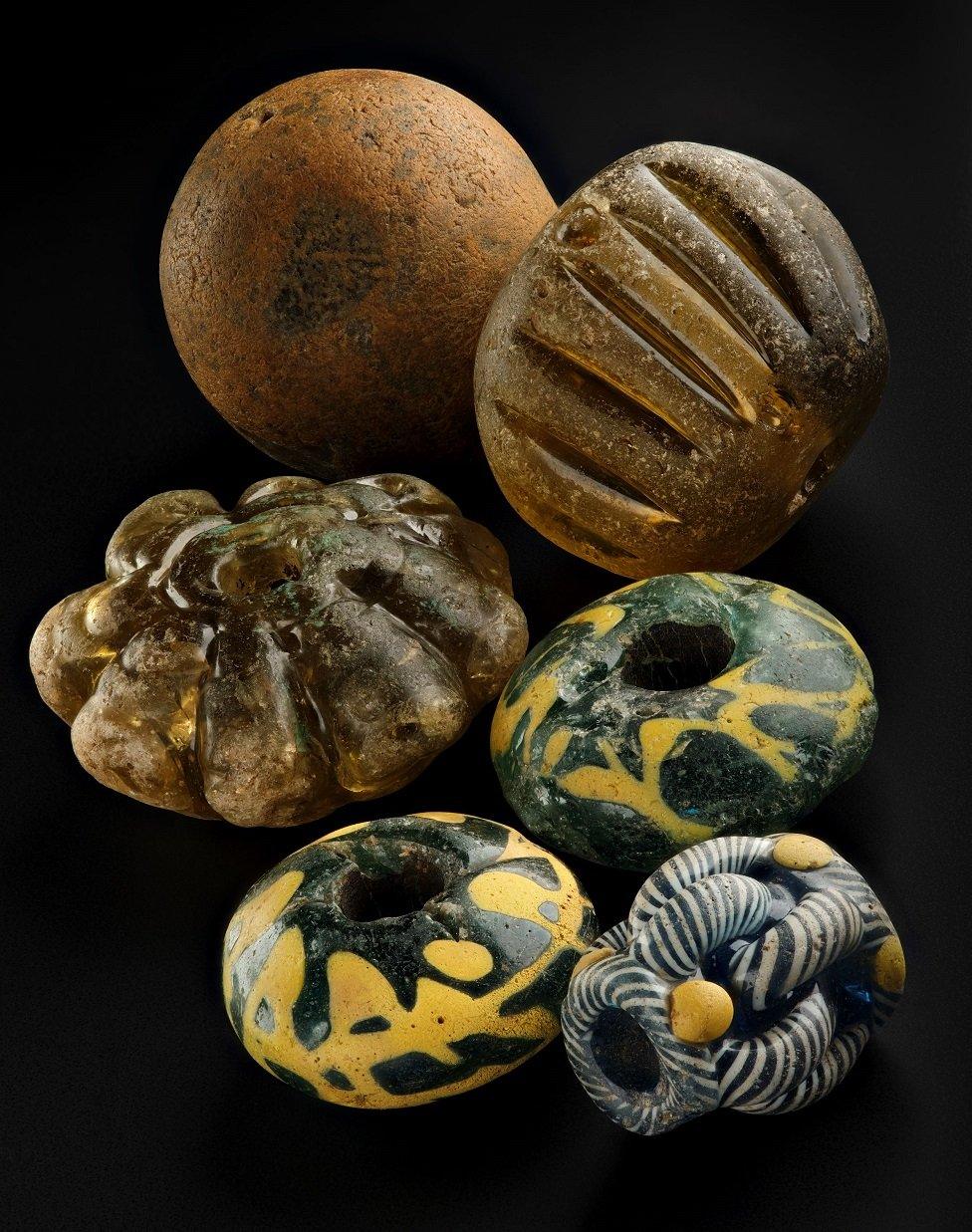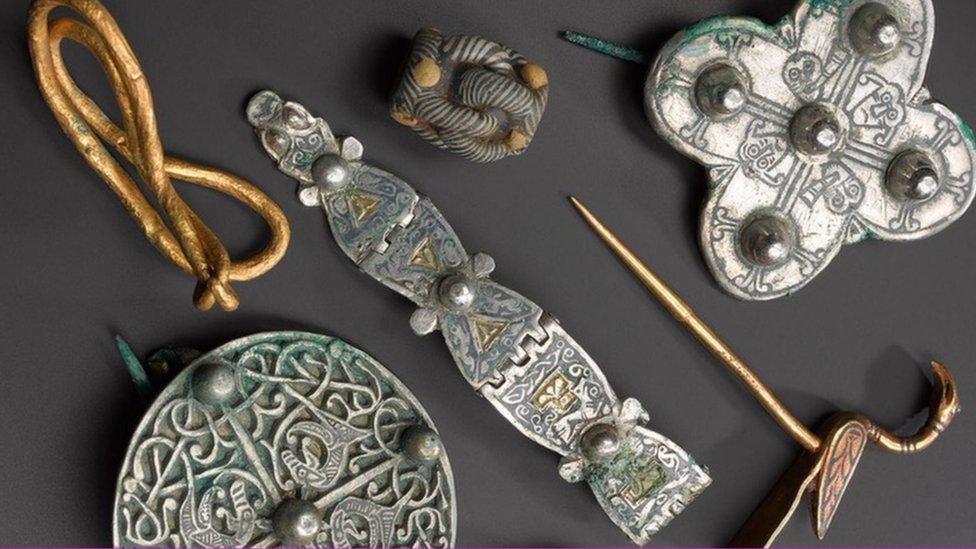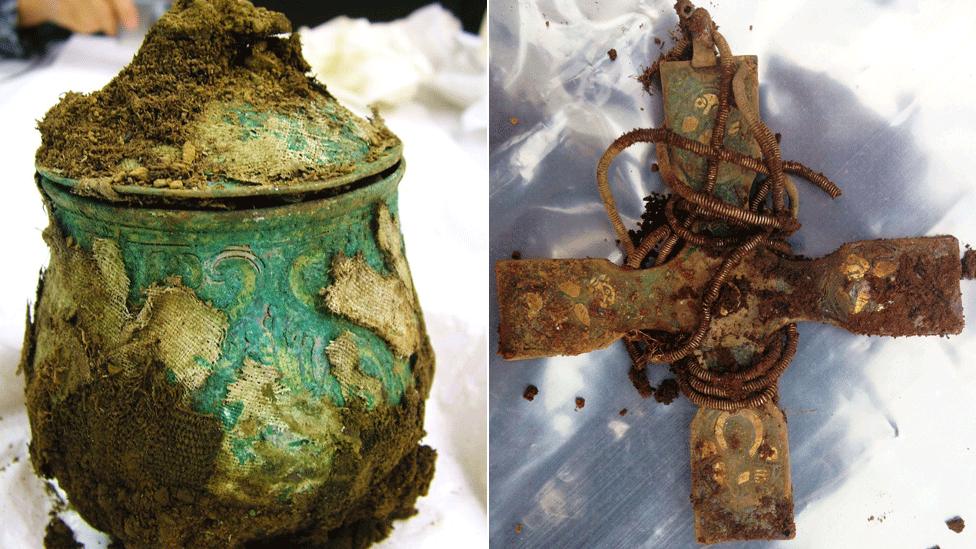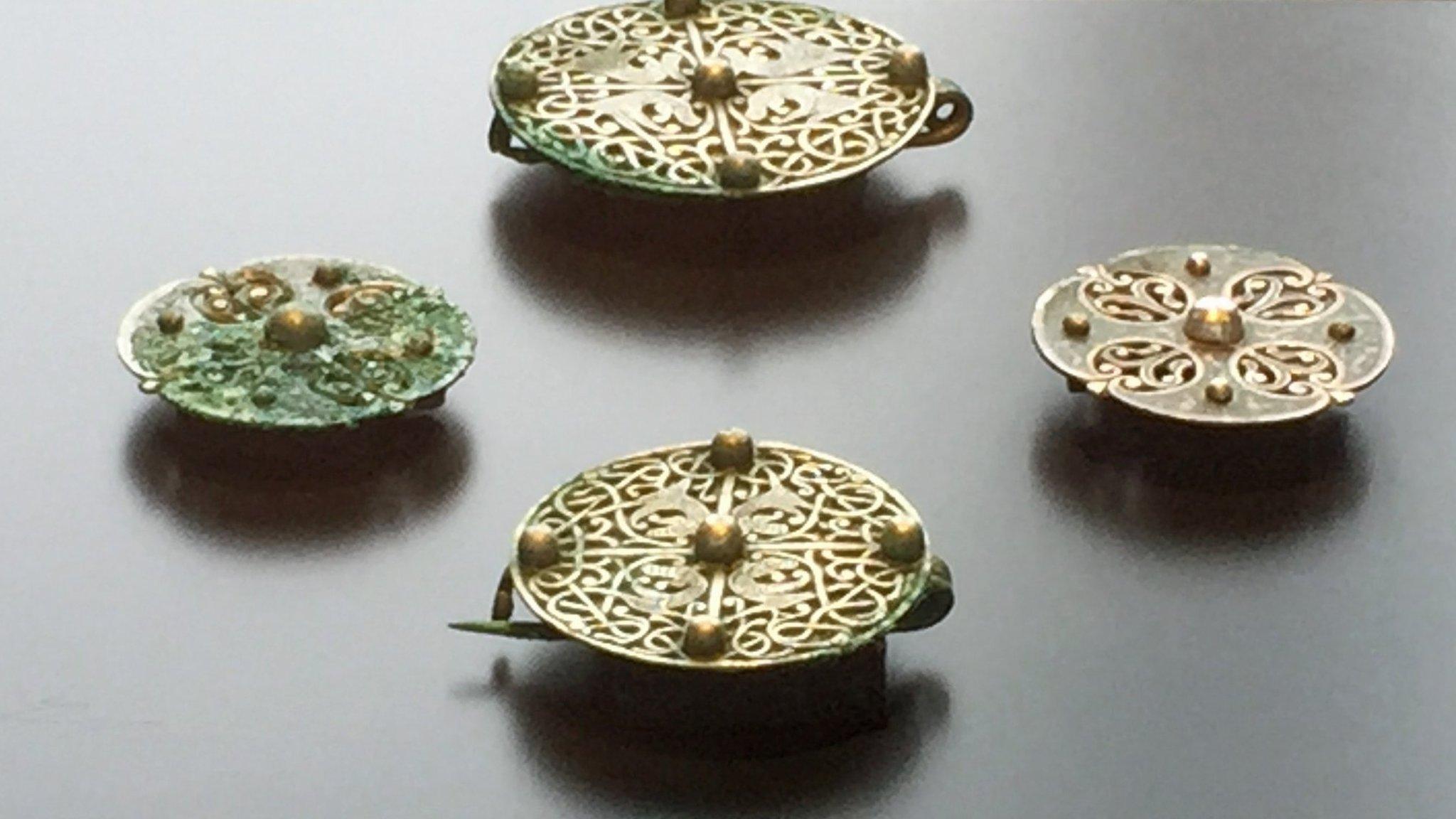Galloway Viking hoard secrets 'unwrapped' by £1m research
- Published

Researchers hope to "unwrap" the secrets of a Viking-age hoard found in a field in southern Scotland after securing significant grant support.
It will allow a £1m three-year research project to proceed.
The Arts and Humanities Research Council has awarded nearly £800,000 towards the study.
National Museums Scotland (NMS) and the University of Glasgow will now go ahead with detailed examination and precise dating of the items.
The hoard was discovered in Galloway in 2014 by metal detectorist Derek McLennan from Ayrshire.
It was acquired by NMS in 2017 and is set to go on display next year.


It is hoped the research can date the items and identify their places of origin - thought to range from Ireland to the Byzantine empire and possibly beyond.
Martin Goldberg, principal curator of medieval archaeology and history at NMS, said: "Most hoards are usually interpreted as buried wealth, with the focus on events surrounding the moment of burial.
"The Galloway hoard challenges this view and presents a rare opportunity to ask in much more detail about how, and why, people assembled and collected hoards during the Viking age."


Co-investigator on the project, Susanna Harris, lecturer in archaeology at the University of Glasgow, said the collection included an "unprecedented array" of materials.
"Many objects are wrapped in textiles, including Scotland's earliest examples of silk, which could have travelled thousands of miles to reach Scotland," she said.
"These types of wrappings rarely ever survive and are archaeological treasures in their own right.
"The unusual survival of organic material like textiles will allow us to apply a range of scientific techniques that usually aren't possible for the precious metals that tend to dominate treasure hoards."
The textiles can be chemically tested for dye to help reconstruct lost colours that have faded over the centuries since burial, or they can be radiocarbon dated to help reconstruct the history of the objects before they were buried.
Dr Harris added: "Unwrapping the hoard, literally and figuratively, is a unique and wonderful opportunity."
Related topics
- Published26 November 2020

- Published19 December 2018

- Published26 October 2017

- Published6 September 2017
